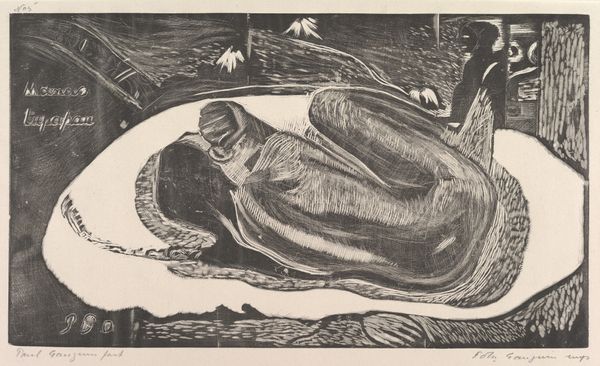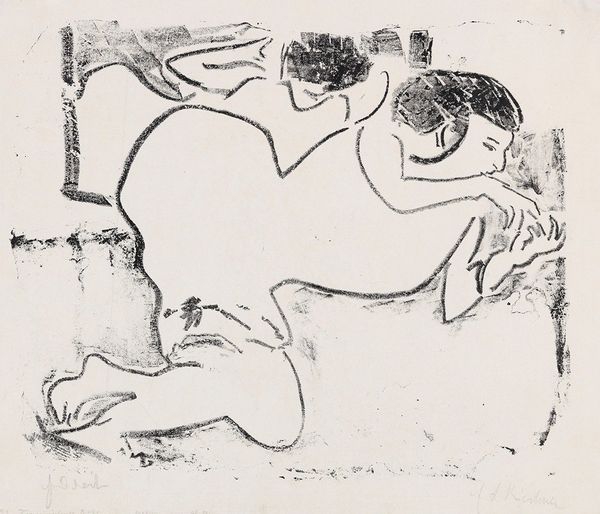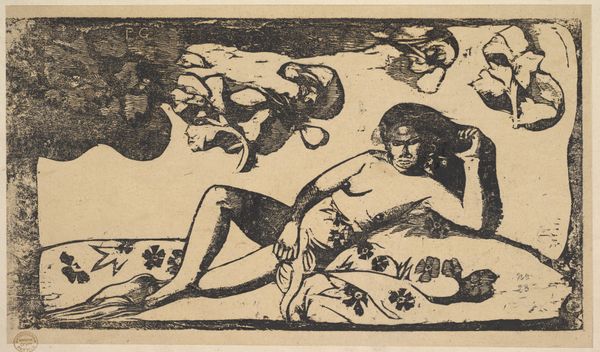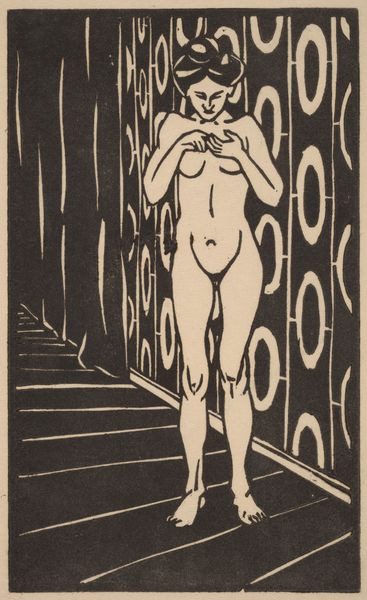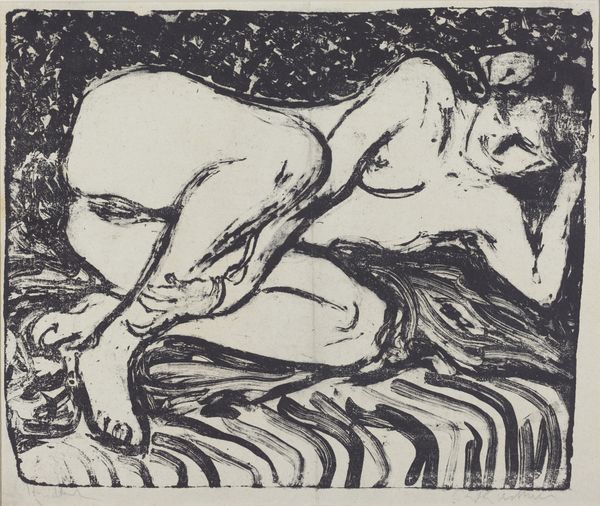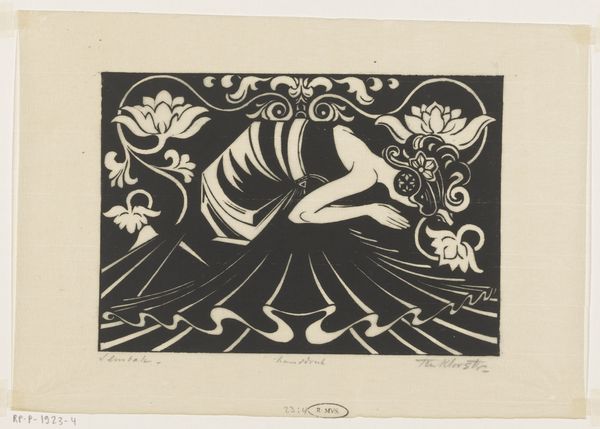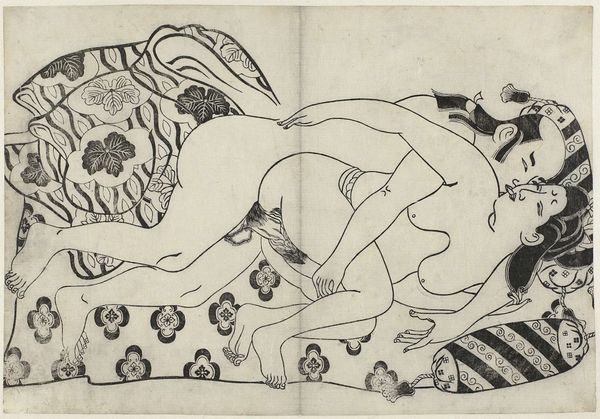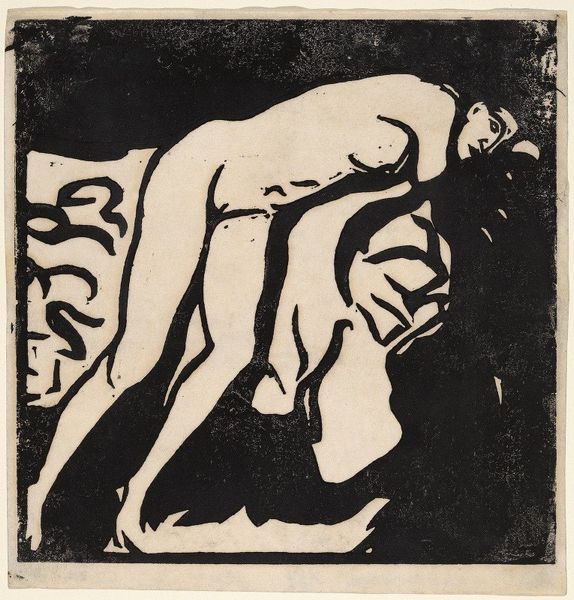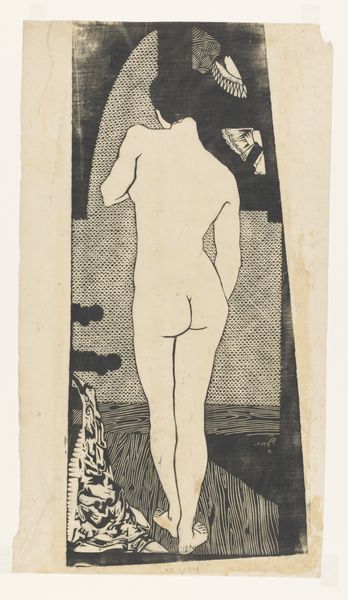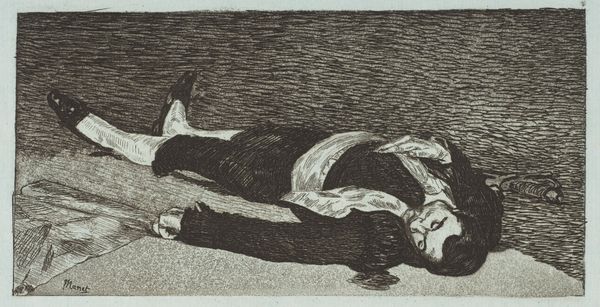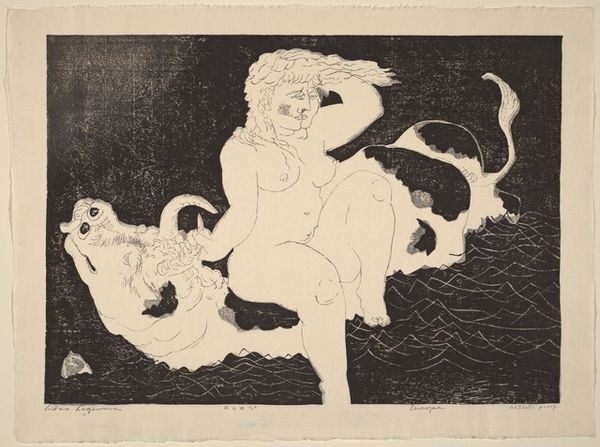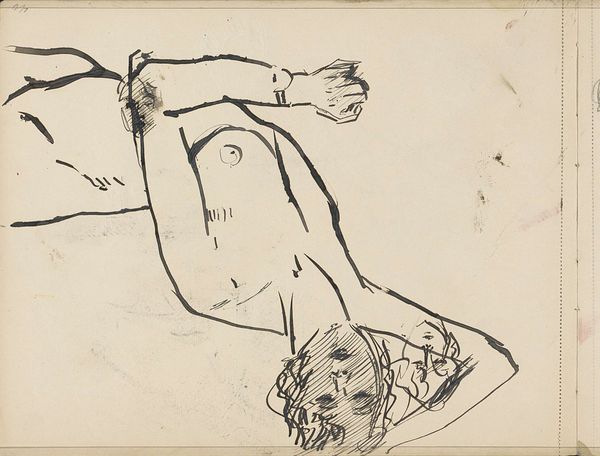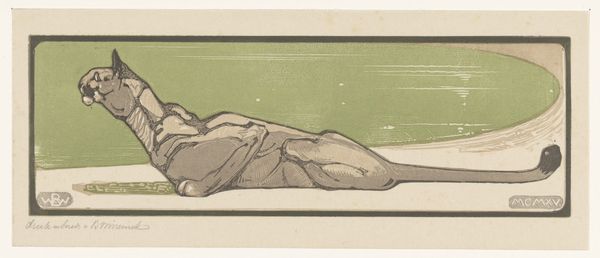
drawing, print, linocut, ink
#
drawing
#
ink drawing
#
linocut
# print
#
linocut
#
figuration
#
ink
#
linocut print
#
expressionism
#
nude
Dimensions: image: 9.5 x 13 cm (3 3/4 x 5 1/8 in.) sheet: 11.2 x 19 cm (4 7/16 x 7 1/2 in.)
Copyright: National Gallery of Art: CC0 1.0
Editor: Ernst Ludwig Kirchner's "Reclining Nude," a linocut from 1905. The stark contrast and the woman's slightly contorted pose create a mood of unease, almost vulnerability. What’s your take on this work? Curator: It’s important to see this through the lens of early 20th-century anxieties surrounding the body, sexuality, and the changing role of women in society. Kirchner, as an Expressionist, was deeply invested in conveying raw emotion. How does the linocut medium itself – with its harsh lines and stark blacks – contribute to that feeling? Editor: I guess the rough lines make it less idealized, more…real? It feels very different from classical nudes. Curator: Exactly. The Expressionists rejected academic traditions, and that includes the male gaze inherent in many historical depictions of the nude. Consider also the historical context – the rise of psychoanalysis, for example. Are we invited to think about the sitter's psychological state as much as her physical form? And what about those circles above her – what might they symbolize? Editor: Perhaps they are like…bubbles, floating thoughts? It makes me think of inner turmoil and external pressure being suggested at the same time. Curator: Precisely. Kirchner uses the female form not just as an object of beauty, but as a site of complex, even contradictory, experiences and emotions, reflective of broader societal shifts and the evolving status of women. Editor: This really gives me a richer understanding of the piece – seeing it within its social context opens up all these new perspectives! Curator: Indeed! By interrogating art through social issues and using it as a springboard, we begin to really appreciate its purpose as social commentary.
Comments
No comments
Be the first to comment and join the conversation on the ultimate creative platform.
